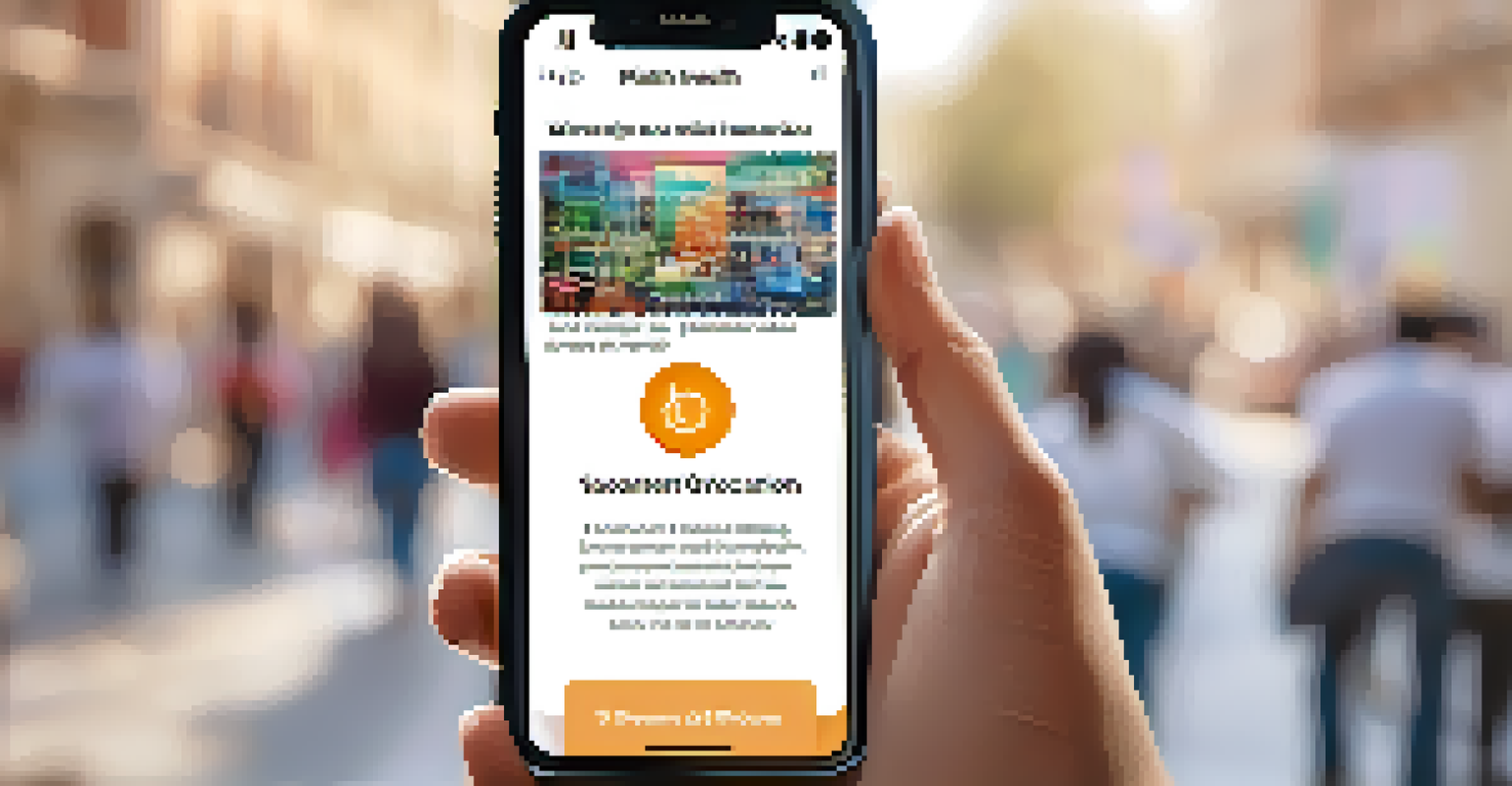Crisis Communication Strategies in NYC's Public Health System

Understanding Crisis Communication in Public Health
Crisis communication refers to the strategic approach used to convey information during emergencies. In the realm of public health, it's vital for maintaining trust and clarity among the community. For instance, during a health crisis like an outbreak, timely and accurate information can prevent panic and misinformation.
The single biggest problem in communication is the illusion that it has taken place.
In New York City, where diverse populations coexist, effective communication becomes even more crucial. The unique challenges posed by varying languages and cultural backgrounds necessitate tailored messaging. Public health officials must be sensitive to these differences to ensure that everyone receives critical updates.
Ultimately, the goal of crisis communication is to provide clear guidance and support to the public. By establishing a solid foundation of trust, health authorities can foster cooperation and compliance with public health measures during a crisis.
Key Components of Effective Crisis Communication
The foundation of effective crisis communication lies in transparency, consistency, and empathy. Transparency involves sharing all relevant information, even if it's not favorable. For example, if a new health risk emerges, communicating the facts honestly helps build trust and credibility with the public.

Consistency is equally important; conflicting messages can lead to confusion and mistrust. Public health officials must ensure that their messages align across different platforms and spokespersons. This consistency helps to reinforce the information being shared, making it more likely to be understood and acted upon.
Importance of Clear Messaging
Effective crisis communication relies on transparency, consistency, and empathy to maintain public trust during health emergencies.
Lastly, empathy plays a critical role in crisis communication. Acknowledging the community's fears and concerns allows health officials to connect on a human level. By showing that they understand the challenges people are facing, officials can foster a sense of solidarity and support.
Utilizing Social Media for Crisis Communication
In today's digital age, social media platforms are invaluable tools for crisis communication. They allow public health officials to reach a vast audience quickly, disseminating crucial information in real-time. For instance, during the COVID-19 pandemic, platforms like Twitter and Instagram became key channels for updates and guidance.
In the midst of chaos, there is also opportunity.
However, while social media offers a broad reach, it also presents challenges, such as the spread of misinformation. Public health communicators must actively monitor these platforms to counter false narratives and provide accurate information. Engaging with the community through comments and shares can also help reinforce the credibility of the messages.
To maximize effectiveness, health authorities should tailor their content to fit the platform and audience. This might include infographics on Instagram, quick updates on Twitter, or more in-depth explanations on Facebook Live. By doing so, they can ensure their messages resonate with different segments of the population.
Cultural Competence in Crisis Communication
Cultural competence is essential when developing crisis communication strategies in a diverse city like New York. This means understanding the cultural nuances that influence how different communities respond to health messages. For example, certain communities may have specific health beliefs that affect their perception of public health advisories.
To effectively communicate with varied populations, public health officials should engage with community leaders and organizations. These partnerships can help tailor messages to better resonate with specific groups. For instance, using culturally relevant examples or languages can enhance understanding and compliance.
Social Media's Key Role
Social media platforms are essential for quickly disseminating accurate information, but they also require monitoring to combat misinformation.
Moreover, incorporating input from these communities can foster a sense of ownership and trust. When people feel their voices are heard, they are more likely to follow public health recommendations, ultimately leading to better health outcomes.
The Role of Media in Crisis Communication
Media outlets serve as crucial intermediaries during a public health crisis, helping to inform the public about the latest developments. They amplify the messages from health authorities, ensuring that critical information reaches a wider audience. For instance, news coverage during disease outbreaks can help raise awareness and encourage preventive measures.
However, the media's role also comes with responsibilities, such as fact-checking and avoiding sensationalism. Misinformation can spread rapidly, especially during crises, so it's important for media professionals to provide accurate and balanced reporting. Collaboration between health officials and media can help ensure that information is both timely and reliable.
Additionally, public health agencies can leverage media partnerships to disseminate information more effectively. By providing clear, concise press releases and participating in interviews, officials can guide the narrative and ensure that the public receives the information needed to make informed decisions.
Training and Preparedness for Crisis Situations
Proper training and preparedness are vital for effective crisis communication in public health. This involves equipping health officials with the skills and knowledge necessary to respond quickly during emergencies. Regular drills and simulations can help ensure that everyone knows their roles and responsibilities when a crisis occurs.
Training should also include strategies for dealing with the media and the public. Understanding how to communicate under pressure can make a significant difference in how messages are received. For instance, practicing how to deliver bad news compassionately can help maintain public trust during challenging times.
Cultural Competence Matters
Understanding cultural nuances and engaging community leaders enhances the effectiveness of public health messaging in diverse populations.
Furthermore, ongoing evaluation of communication strategies is essential. After a crisis, reviewing what worked and what didn’t can provide valuable insights for future preparedness. This continuous improvement cycle helps refine crisis communication efforts, ultimately leading to better outcomes.
Evaluating Crisis Communication Effectiveness
Evaluating the effectiveness of crisis communication efforts is crucial for ongoing improvement. This can involve analyzing public feedback, social media engagement, and the overall impact of messaging on public behavior. For example, assessing whether vaccination rates increased following communication campaigns can help gauge success.
Surveys and focus groups can provide additional insights into how well the messages were received. Understanding the community's perception of the information shared can highlight areas needing improvement. This feedback loop ensures that public health officials can adjust their strategies to better meet the needs of the population.

Moreover, documenting lessons learned during each crisis can create a valuable resource for future situations. By compiling successful strategies and identifying pitfalls, health authorities can enhance their crisis communication frameworks, ultimately leading to more effective responses in the future.